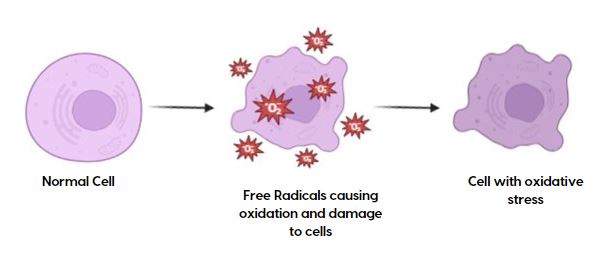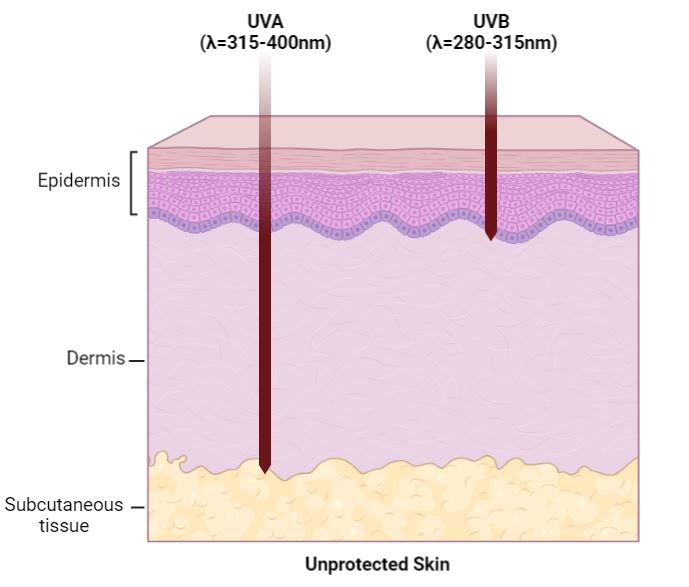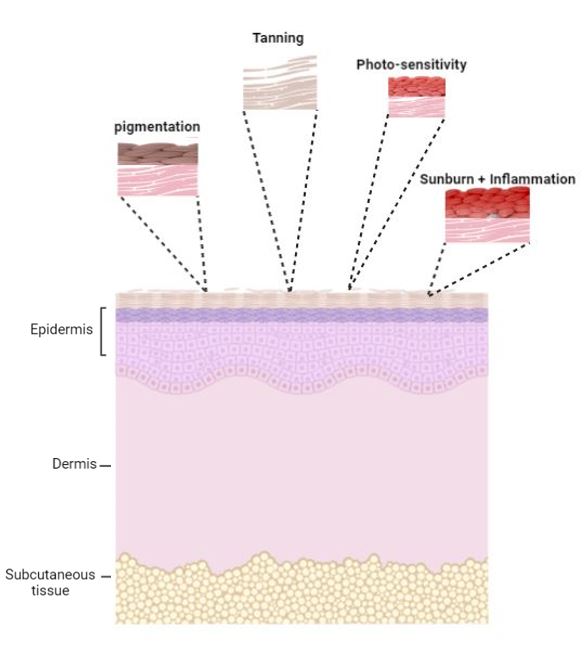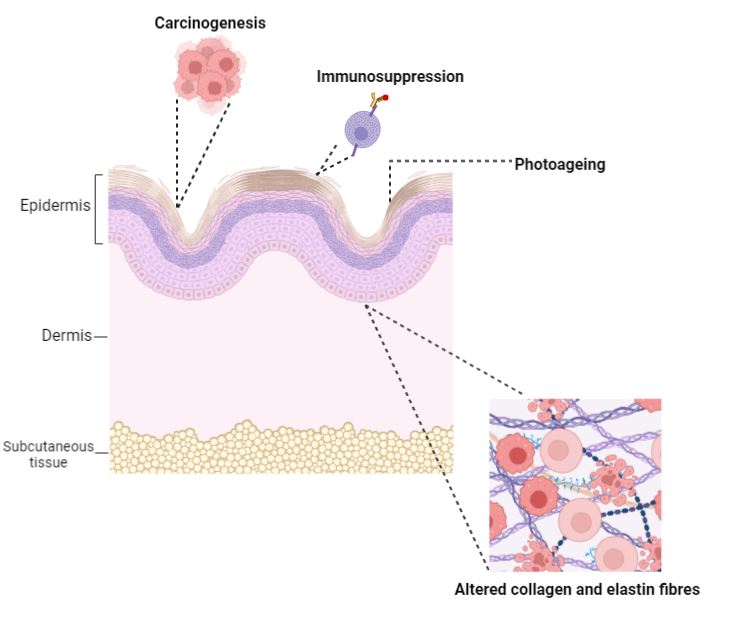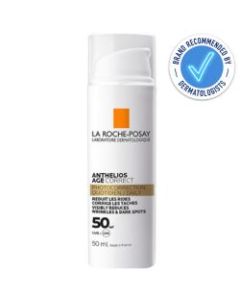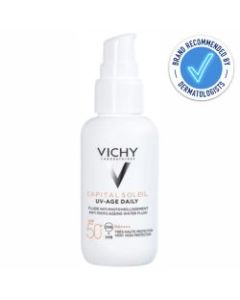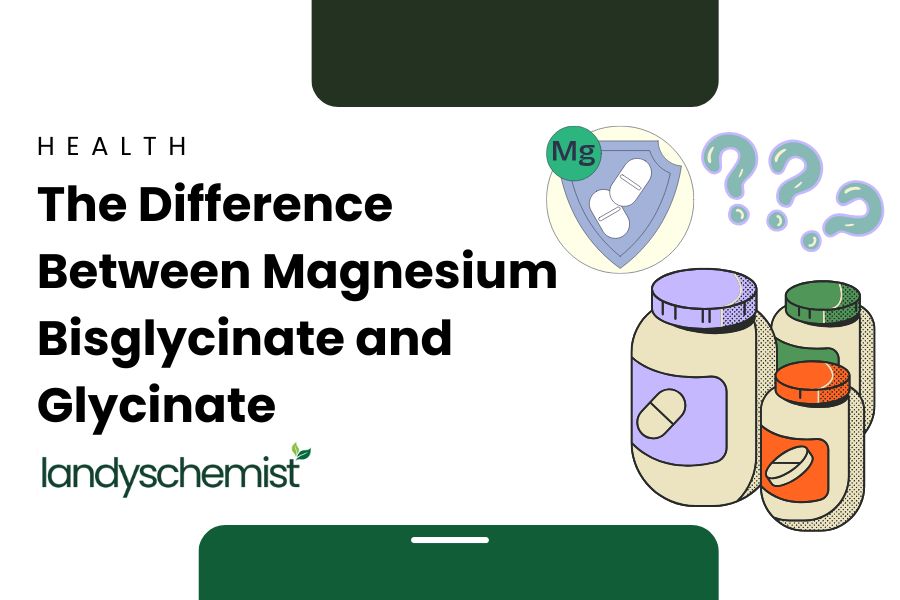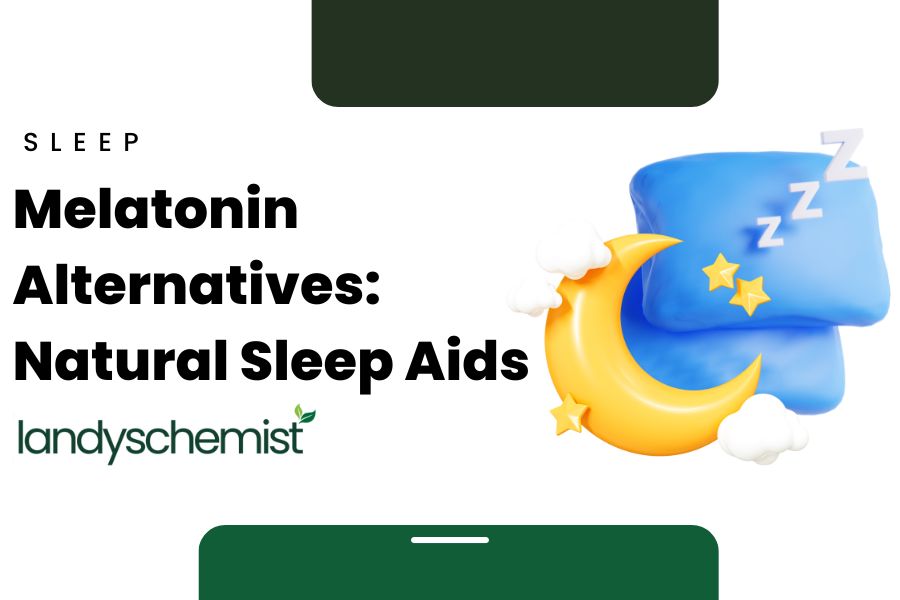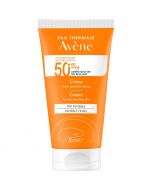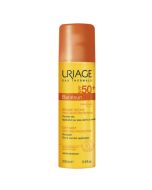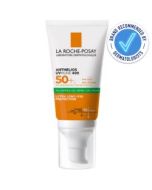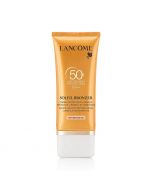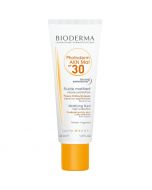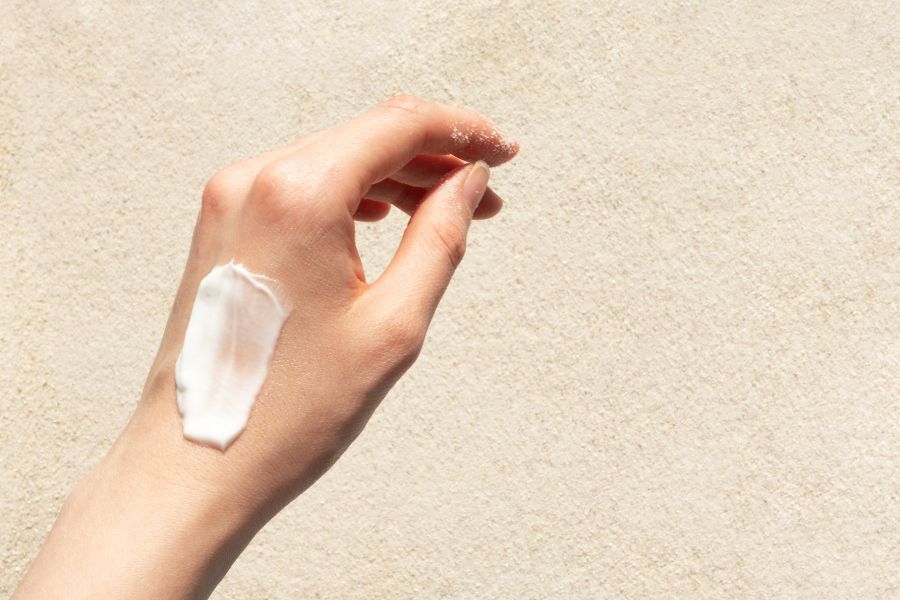
Photoageing: Why you should use SPF
With summer fast approaching, it is now more important than ever to remember to apply SPF to our skin to protect and preserve the smooth, supple texture of our skin.
As we expose our skin to the sun, we are allowing damaging radiation from UV, visible light, and infrared rays to penetrate through the layers of the skin.
Whilst fine lines, wrinkles and age spots are all a natural part of ageing, there is often a culprit which is overlooked which can accelerate this process: photoaging. Photoaging is a phenomenon that occurs when there is prolonged exposure to ultraviolet (UV) radiation, highlighting the necessity to find efficient sun protection, especially in the face of rising photo pollution levels.
What is photoageing of the skin?
Photoaging refers to the premature aging of the skin caused by cumulative effects of prolonged exposure to ultraviolet radiation, as well as infrared and visible light. Contrary to chronological ageing which occurs naturally over time, photoaging has distinct characteristics which are influenced by skin type and ethnicity, such as the formation of deep wrinkles, uneven pigmentation, loss of elasticity and textured skin. It is caused by both UV-A and UV-B radiation, though UV-A is the major contributor as it penetrates further to the dermis, whereas UV-B is predominantly absorbed in the epidermis.
Aging is an inevitable part of life, but photoaging can be minimised through taking proactive measures.
What are signs of photoageing?
Photoageing causes wrinkles
Deep wrinkles are caused due to the breakdown of collagen and elastin fibres within the skin. Collagen is an abundant protein which gives structural support, whilst elastin provides elasticity to the skin.
UV radiation can cause the production of reactive oxygen species (ROS) which are free radicals, within the skin. Free radicals can cause oxidative stress and damage to these essential proteins (shown below). Oxidative stress means that there is an imbalance between free radicals and the antioxidants within the body, causing cells to undergo damage. As a result, the collagen and elastin fibres become fragmented, causing skin to lose its firmness.
Photoageing causes a loss of elasticity
The UV-A rays can penetrate deep within the skin to damage the structure of elastin fibres and inhibiting the production of new elastin. Elastin is a protein which allows your skin to stretch, be resilient and keep skin tight. A decrease in elastin means that the skin’s ability to recoil diminishes, resulting in sagging and lose skin.
Photoageing causes dark spots and pigmentation
UV rays have the potential to induce pigmentation by stimulating the production of melanin, the pigment responsible for our skin colour. Melanin serves as a natural defence mechanism, scattering UV rays and protecting the skin from damage. However, prolonged exposure to UV radiation can lead to oxidative stress on keratinocytes, the predominant cells in the epidermis responsible for skin repair. This stress triggers the release of melanocytes, which contribute to the development of hyperpigmentation. Additionally, studies have suggested that UVA exposure may increase the risk of DNA mutations, potentially raising the chances of developing melanoma.
Photoageing affects complexion
Photoaging can cause an uneven complexion. The loss of collagen and elastin can cause an uneven distribution of collagen, and result in a less uniform skin complexion and discolouration. Additionally, inflammation caused by UV radiation can cause dry, rough skin. This is because UV radiation impacts the barrier function and cell cohesion.
What is photo-pollution and how does it affect the skin?
Photo pollution is becoming an increasing concern and encompasses the harmful effects of environmental pollutants with UVA and UVB radiation. Pollution also induces oxidative stress and photo-ageing, as it accelerates solar radiation damage into the skin. This combination leads to amplified damage on the skin.
Photo-pollution can cause pigmentary disorders, wrinkles, dull complexion, and sagginess.
What is UV Radiation?
Ultraviolet (UV) radiation is a type of electromagnetic radiation emitted by the sun and other sources like tanning beds. It is not visible to the human eye as its wavelengths are shorter than those of visible light.
UV radiation can be categorized into UV-A, UV-B, and UV-C, with UV-C being the most harmful. Fortunately, UV-C rays are almost entirely absorbed by the Earth's atmosphere, while approximately 95% of UV-B rays are absorbed by the ozone layer. However, the remaining 5% of UV-B rays can still penetrate the skin to the epidermis layer lead to sunburn and cellular damage. On the other hand, 95% of UVA rays reach the ground, and can penetrate deeper into the skin, through to the dermis shown below.
What are the effects of UV exposure on the skin?
Short Term Effects of UV Exposure on the skin
Sun exposure can cause numerous short-term effects on the skin:
Oxidative Stress can dry the skin
Excessive exposure to UVA and UVB rays can trigger the overproduction of free radicals throughout the various layers of the skin. This excessive generation of free radicals leads to a state of oxidative stress, where the delicate balance between free radicals and antioxidants is disrupted. Therefore, skin cells and tissues are exposed to potential damage.
Oxidative stress induced by UV rays has the potential to cause DNA mutations and strand breaks within the skin cells. If not properly repaired, these DNA abnormalities can have long-term effects, including an increased risk of developing skin cancer.
Moreover, UV-induced oxidative stress can impair the natural barrier function of the skin. This disruption can lead to the depletion of essential lipids, reduced moisture retention, and an elevation in trans epidermal water loss (TEWL). As a result, the skin may become dry, lacking in hydration, and more susceptible to external irritants.
Immediate Pigment Darkening (IPD) from UV damage
This is the temporary darkening of the skin occurring immediately after exposure to UV radiation, in particular UVA rays. This is normally reversible and fades within short period of time when the skin is no longer exposed to the UV radiation. This darkening does not involve an increase in melanin production but rather a redistribution or darkening of existing melanin within the skin.
Sunburn and Inflammation from UV damage
Excessive UV exposure, especially UVB rays, can lead to sunburn which can manifest as redness, pain, and inflammation of the skin. It triggers an inflammatory response within the skin, causing blood vessels to dilate and the skin to become inflamed. It can vary in severity depending on the extent of the exposure to the sun. This can cause symptoms to range from mild redness to blistering or peeling.
UV damage can cause hyperpigmentation
Prolonged exposure to the UV radiation of UVA and UVB rays can lead to long-lasting pigmentation changes within the skin. It appears as dark spots, freckles or patches on the skin and is caused by an increase in melanin production which is triggered by UV radiation. UV rays can stimulate melanocytes (cells which produce pigment) in the skin to produce more melanin, leading to the development of pigmented areas.
Uneven skin texture from UV damage
Prolonged exposure can lead to the thickening of the outermost layer of the skin, known as the stratum corneum. This is in response to the damaging effects of UV radiation, but this is what can also contribute to an uneven skin texture.
Photosensitivity from UV damage
Photosensitivity can be caused by both UVA and UVB Rays. UV radiation can make the skin more reactive and sensitive to sunlight causing redness, inflammation, and discomfort. This could lead to a UV Induced reaction causing itching, swelling and redness.
Long Term Effects of UV Exposure on the skin
UV Exposure can also cause long term effects on the skin such as:
UV-induced immunosuppression from UV exposure
UV-induced immunosuppression occurs when chronic or excessive exposure to UV radiation weakens or suppresses the immune response. This can have various effects on the immune cells present in the skin, such as Langerhans cells, which play a crucial role in initiating an immune response. Prolonged exposure to UV radiation can lead to a decrease in the number of Langerhans cells and impair their functionality, compromising the skin's defence mechanisms. One consequence of UV-induced immunosuppression is an increased susceptibility to infections. With a weakened immune response, individuals are more vulnerable to infections caused by pathogens like the Herpes simplex virus (HSV), which can manifest as cold sores.
Long-term UV exposure can interfere with the natural DNA repair processes in the skin. UV radiation can cause DNA damage within skin cells, and a robust immune system is essential for efficient DNA repair mechanisms. However, immunosuppression can compromise DNA repair, leading to the accumulation of genetic mutations and an increased risk of skin cancer development
Photoaging from long term UV exposure
The radiation from UVA and UVB rays alter the structure of collagen and elastin fibres, so they lose their strength and elasticity. This results in the formation of wrinkles and increase in lose skin as the skin is unable to maintain tightness. UV radiation can damage the epidermis, causing it to thicken and accumulate dead skin cells which can result in a rough surface texture. Prolonged exposure to UV radiation can lead to the development of telangiectasia, which are small, visible blood vessels that appear on the skin's surface.
The link between UV exposure and cancer
Prolonged exposure to UVA and UVB rays can have serious implications for the development of skin cancers through a process called carcinogenesis.
UV radiation directly targets the DNA within skin cells, causing the disruption and breakage of chemical bonds within the DNA structure. One form of DNA damage is the creation of DNA dimers, which can cause errors during the replication and transcription processes. When these DNA dimers are not adequately repaired by DNA repair enzymes, mutations arise, leading to uncontrolled growth of mutated cells.
The skin's defence system may weaken, especially in cases of excessive UV exposure, impeding the efficient repair of DNA damage. This compromises the skin's ability to correct mutations, resulting in the development of mutated cells that have the potential to form tumours.
There are two primary types of skin cancers associated with UV radiation: Carcinoma and melanoma. Carcinoma typically originates from keratinocytes, the primary cells found in the outermost layer of the skin (epidermis). On the other hand, melanoma arises from melanocytes, the pigment-producing cells in the skin. Both types of skin cancers can occur due to the accumulation of DNA damage, impaired repair mechanisms, and the uncontrolled growth of abnormal cells.
What is an SPF?
What does SPF mean?
SPF stands for Sun Protection Factor. It is a measure of how much UV radiation, or solar energy is needed to cause sunburn on skin, which is protected, i.e., wearing sun cream compared to unprotected skin. The higher the SPF value, the higher the protection against sunburn.
To illustrate, applying SPF 50 provides skin protection until the point where the skin is exposed to 50 times more UV radiation than the amount needed to cause sunburn on unprotected skin.
SPF is not directly related to the time of solar exposure, but rather the amount of solar exposure.
Why should you use an SPF?
SPF can reduce the risk of skin ageing
Regular use of SPF can significantly reduce the signs of skin aging. A study conducted showed that daily sunscreen use can reduce skin ageing by up to 24% to delay the formation of deep wrinkles.
SPF can improve the clinical appearance of Photoaging
Continuous usage of SPF can help the appearance of photoaging by preventing the development of fine lines, wrinkles, and uneven skin texture. This helps aid in maintaining a more youthful, smoother complexion.
SPF can reduce the risk of pigmentation
SPF can effectively help to reduce the appearance of pigmented spots, such as age spots by preventing the excessive production of melanin which is triggered through prolonged UV exposure. Furthermore, regular use of SPF can enhance overall skin radiance to promote a more even complexion.
SPF can reduce the risk of skin cancer
A study in 2020 found that daily sunscreen use decreased the risk of melanoma and nonmelanoma skin cancers. Regular application of SPF protects the skin from harmful UV radiation which can cause DNA damage and mutations which can contribute to the development of skin cancer.
What to look for in sun protection:
What is PA in sun protection?
PA stands for Protection Grade of UVA. These tend to be followed by + signs. It is designed to show consumers how much protection against UVA rays the product provides. The higher the +, the more protection against UVA rays.
It ranges from PA+ to PA++++ where PA+ means low protection, using between 2 to 4 UVA filters. PA +++ represents more than 8 UVA filters, and thus provide a higher efficacy,
What is broad Spectrum Protection?
When selecting a sun cream, it is crucial to look for broad spectrum protection. Broad spectrum means that the sunscreen can shield your skin from both UVA and UVB rays. However, recent research has highlighted the importance of also safeguarding the skin against Visible Light and Infrared Light, as they have been found to cause structural damage to the skin.
UVB rays primarily contribute to sunburn, while UVA rays can penetrate deeper into the skin and damage skin cells, leading to premature aging. To ensure comprehensive protection, it is beneficial to opt for mineral sunscreens, as they tend to offer a broader spectrum of light defence.
Additional Active Ingredients in sun protection
Looking for additional active ingredients like antioxidants such as niacinamide can counteract the stress produced by solar radiation and pollution. Furthermore, anti-aging actives like hyaluronic acid can provide optimal benefits to help minimise skin ageing symptoms.
How to use SPF and how long does SPF last?
It is important to utilise a broad-spectrum SPF that is beneficial for your skin type, with a good tolerance profile. Apply SPF 30 minutes before sun exposure to allow the skin to absorb the product fully and provide optimal protection. Although the duration of SPF can vary depending on factors such as sun exposure or sweating, the effectiveness of SPF generally lasts for about two hours when applied properly. So, it is important to re-apply SPF every 2 hours, or immediately after swimming or sweating.
It is important to wear SPF everyday as it helps protect your skin from premature ageing, skin cancer and sunburn.
SPF Recommendations
This sunscreen combines advanced technologies, such as the Mexoryl XL Filter System, with potent dermatological actives to effectively combat aging signs and prevent photo-induced hyperpigmentation. It hydrates and plumps the skin with fragmented hyaluronic acid, brightens the skin with phe-resorcinol (1000x more efficient than vitamin C), and soothes inflammation with niacinamide.
This innovative sunscreen effectively addresses the appearance of wrinkles and dark spots. Powered by Netlock technology, it forms a durable and ultra-resistant film when applied to the skin, ensuring long-lasting protection. Enriched with 1% Vitamin E, it effectively shields the skin from oxidative stress, preventing damage caused by free radicals. Additionally, its formulation includes 4% peptides that stimulate collagen synthesis, promoting a more even complexion and reducing inflammation.
Summary
- Photoaging can occur at any age and is caused by UV radiation, resulting in loss of elasticity, wrinkles and hyperpigmentation.
- You should use SPF to protect the skin from the effects of photoageing, decrease the risk of skin cancers associated with UV radation and protect the skin from damage.
- It is important to look for sun protection that is broad spectrum to protect you from UVA and UVB Rays.
- Remember to reapply SPF every 2 hours, or immediately after swimming, sweating or towelling!
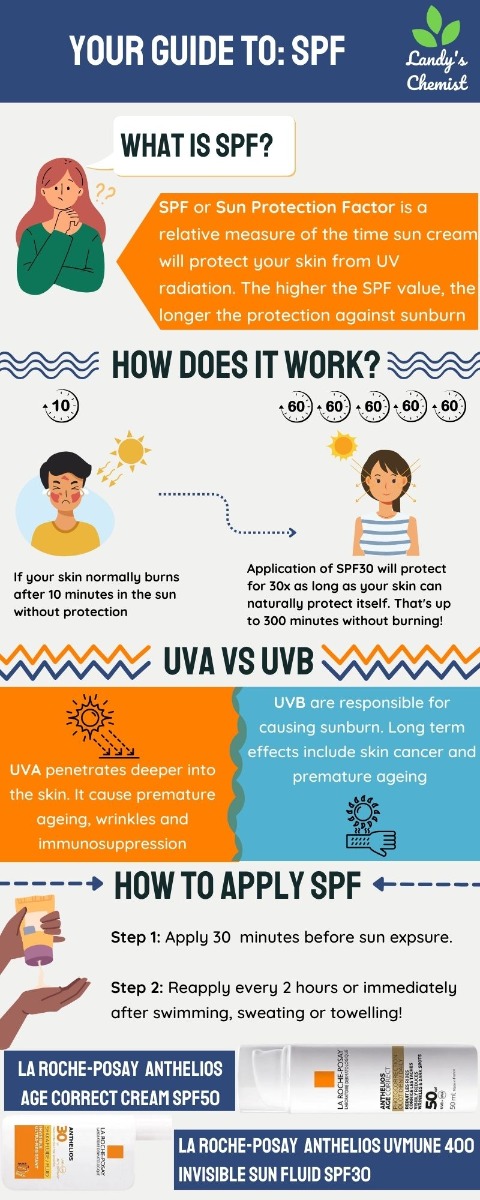
By Saarah Mengrani, MSc Biotechnology

